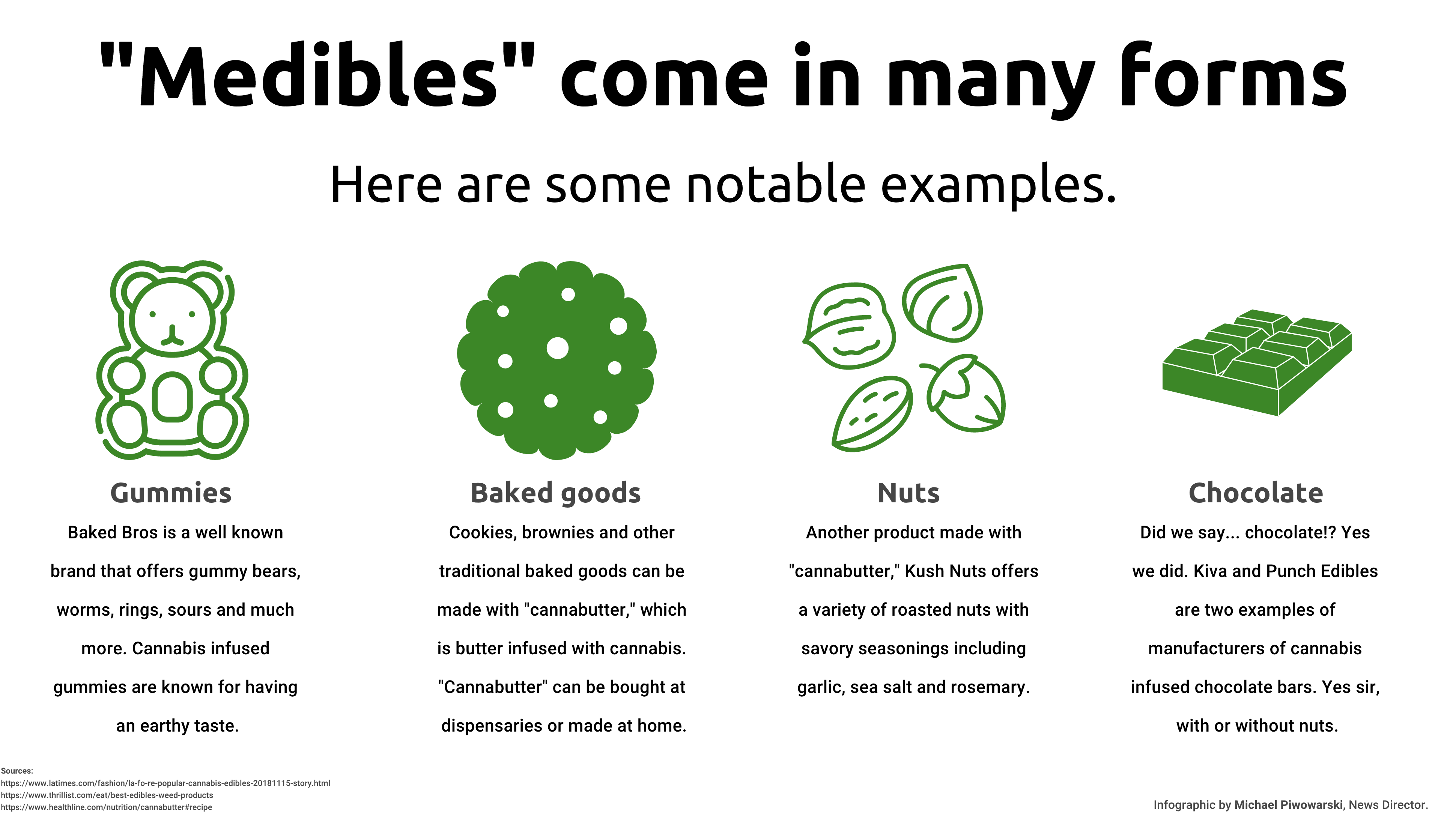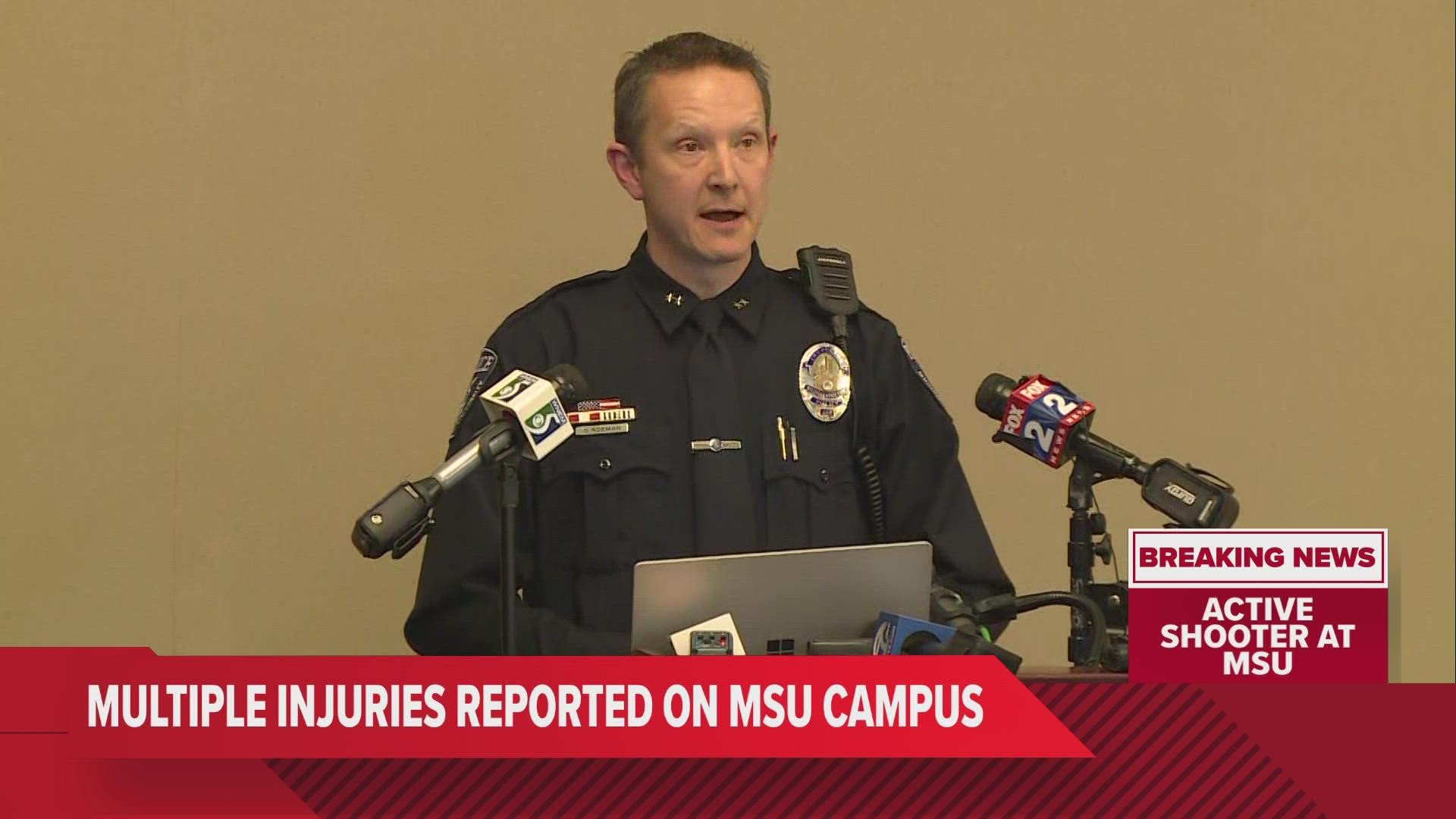By Michael Piwowarski
BAY CITY – A spoonful of sugar helps the medicine go down, in a most de-lit-ful way.
To that end, not all marijuana is smoked or vaped. Edibles have become an increasingly popular method of consumption.
Roots Provisioning in Bay City is one of several destinations for acquiring edible products locally, including baked goods, chocolates and gummies, all infused with cannabis.
“[Baked goods] usually tend to fly off the shelves quicker than other things, because, you know, people want their brownies and their rice krispies […] the original kind of edibles you think of,” says Marissa Burt, social media representative at Roots.
Roots started to sell recreational marijuana Friday, Dec. 27, becoming the first retailer in Bay County to do so. However, their edible products are still only available for medical patients
Burt explains that, as a licensed facility, Roots has to get approval from the state to transfer certain inventory items on the medical side to be sold recreationally, including their edibles.
“That’s why you’ll find places won’t necessarily have certain things,” says Burt. “It’s because the state will say yes or no to them, just dependent on what they’re feeling, what guidelines they go by.”
The difference between recreational and medical edibles, to the best of the retailer’s knowledge, typically lies in dosage.
“For the most part, you don’t see anything over, like, 200 milligrams [in medical edibles] because that’s, like, the cap the state gives for medical,” says Burt. “But I believe, from what I’m understanding of it, for recreational it’s going to be less. It’ll probably only be like 100 milligrams, but […] I’m not terribly sure if that’s the case.”

In Michigan, medical patients have a daily purchase limit of two and a half ounces of marijuana. Burt says that the total weight of an edible counts toward that limit, not just the dosage amount of the drug itself.
“If the edible weighed […] say, eight grams, it may only have 100 milligrams of THC, but it’s going to count against eight grams in your total, not 100 milligrams,” says Burt.
At Roots, one of the top selling brands of edibles is Michigan-based Motor City Cannabites, which offers brownies and gummies. However, as Burt points out, it is common for customers to buy marijuana for making their own edibles.
Cannabutter is a commonly used method of infusing foods with cannabis. As the name implies, it is basically butter mixed with cannabis and can be made at home. However, the process is tricky, as the cannabis must be heated slowly to activate its psychoactive properties.
“We tend to find that there are actually quite a few people that make their own just because they’re so familiar with the process of making it and they know the effects of their edibles that they make,” says Burt.
It is also difficult to measure the potency of THC in any edibles, so dank chefs go by a trial and error process. Leafly.com recommends sampling small amounts (¼ to ½ teaspoon) at a time to see how strong the effects are, and then developing a personal “standard” dose.
In contrast to smokable products, the effects of edibles are more delayed, yet are more extended and potentially more potent, making them easy to overconsume. Healthline.com lists paranoia, impaired motor ability and even psychosis as possible symptoms of overconsumption.
However, Healthline.com further reports that edibles are still likely a safer way to consume cannabis than smoking it, as the latter is known to increase the risk of lung cancer. Smoking marijuana is also linked to cases of lung inflammation, bronchitis and impaired brain function.


